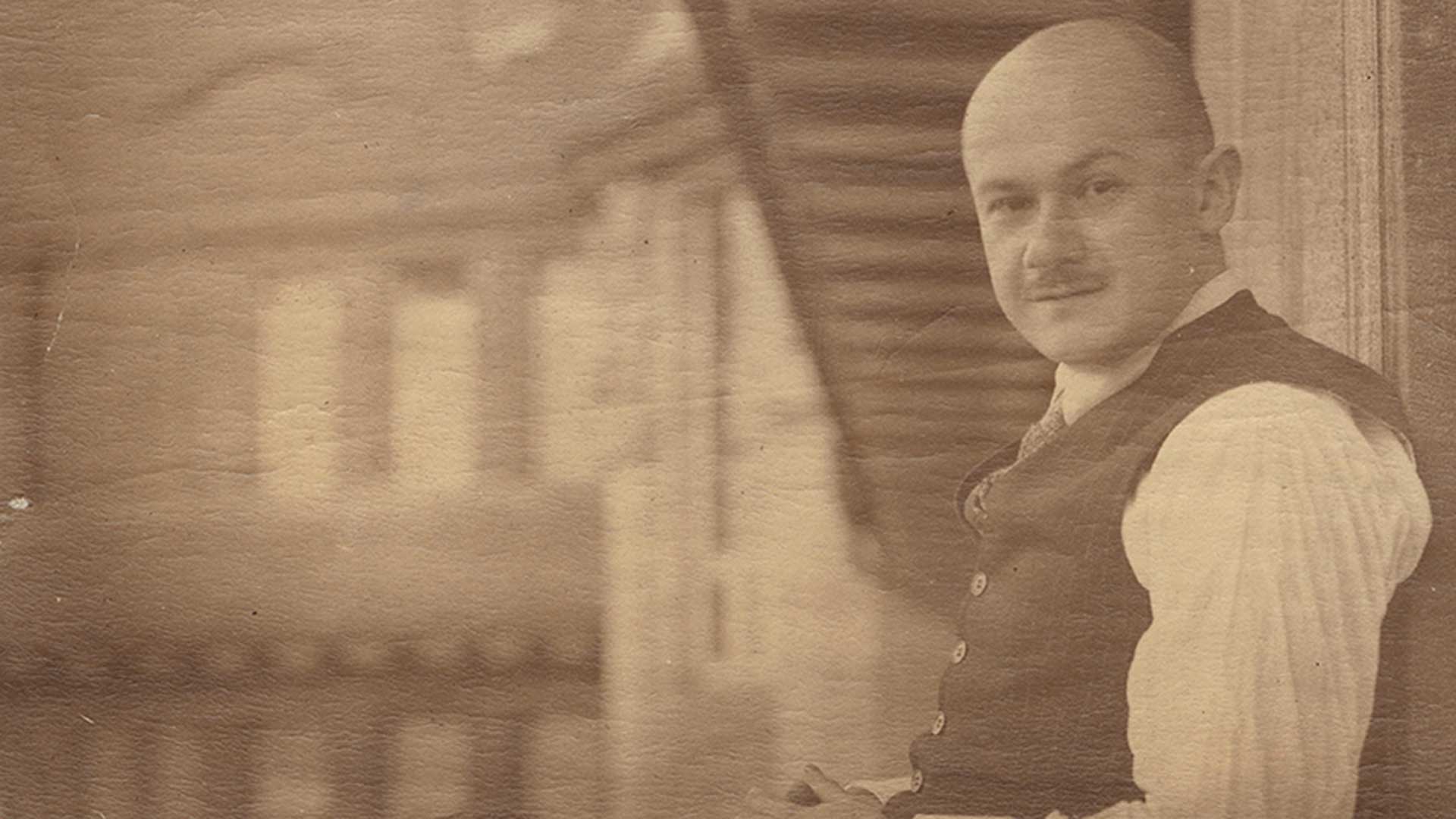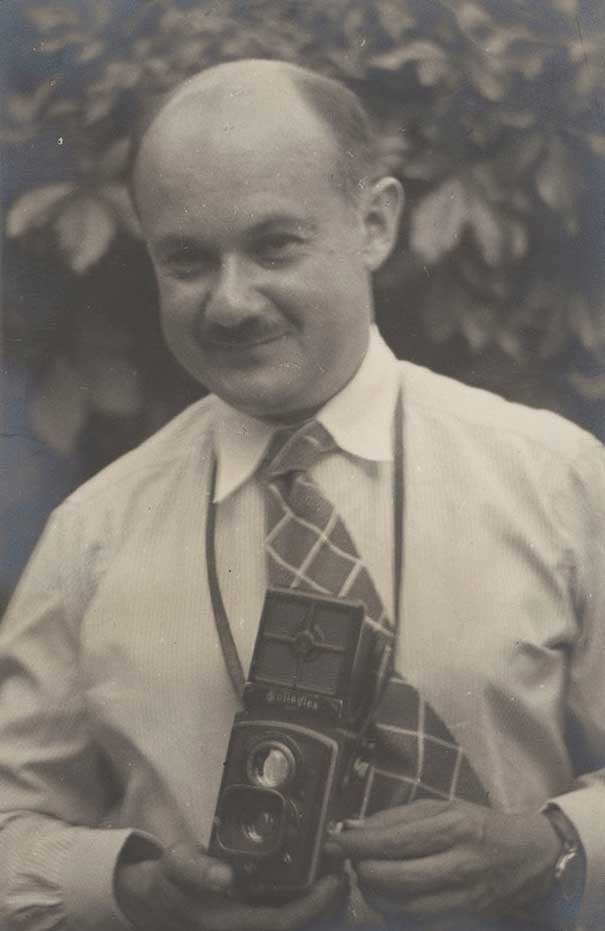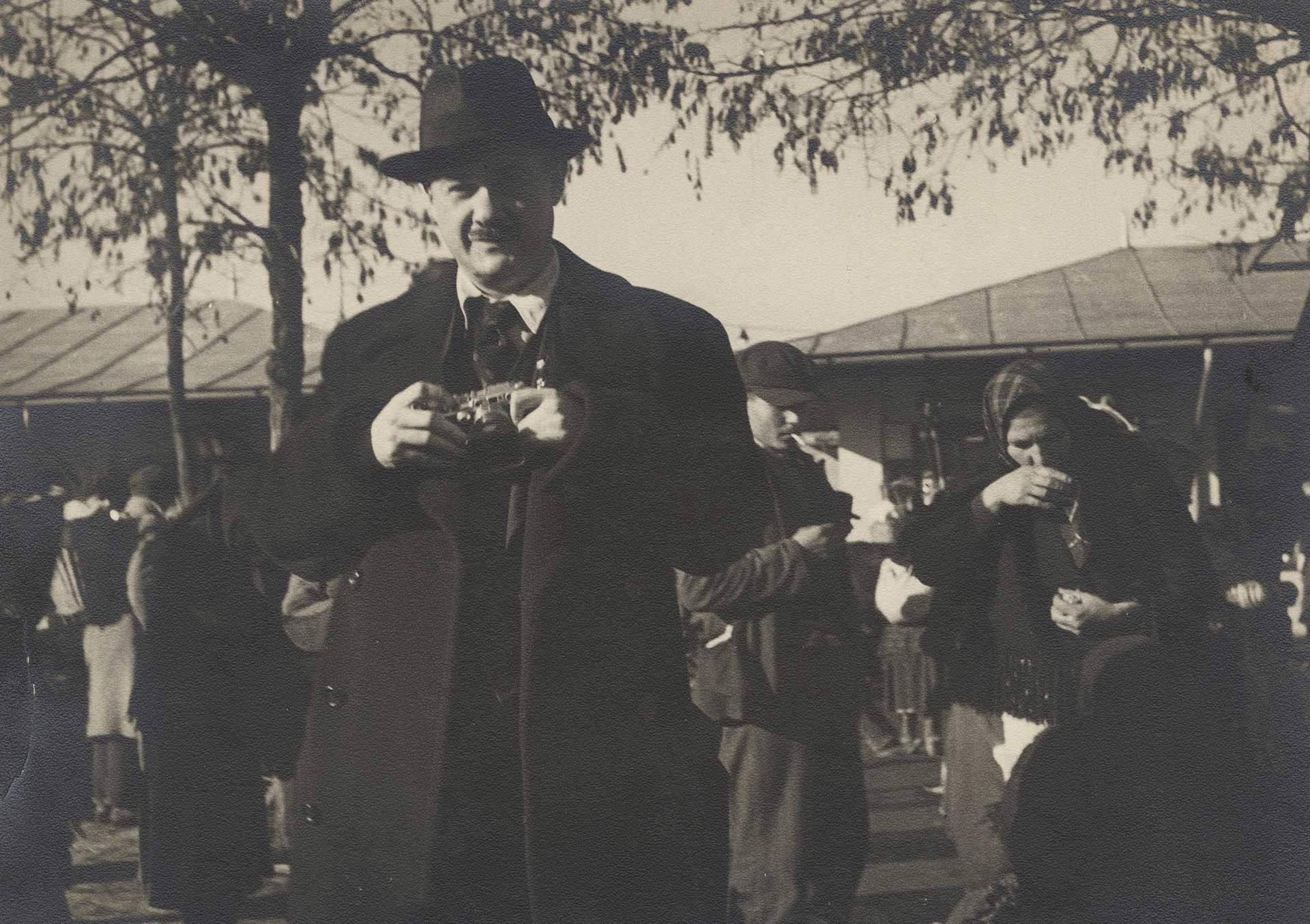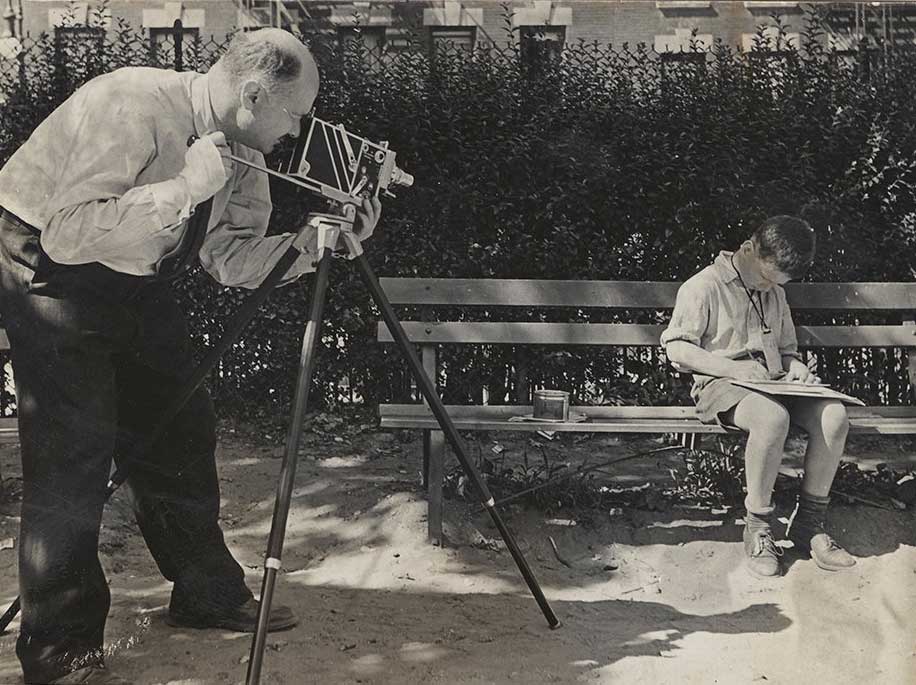Roman Vishniac was born in Moscow in 1897 to an affluent Jewish family. After the Bolsheviks seized power, Vishniac’s parents emigrated to Berlin. Vishniac stayed in Moscow to pursue his graduate studies in biology and zoology. In 1920, Vishniac married Lea (Luta) Bagg, a young Jewish woman from Riga, and followed his parents to Berlin. Luta and Roman had two children, Wolf and Mara.

Roman Vishniac
Vishniac became an accomplished street photographer in Berlin. His zoologic explorations into photo microscopy continued in his “aquarium room” of the apartment, where a menagerie of the animal kingdom – including a pet monkey named Jackie – co-existed with the family. In the apartment’s darkroom, Vishniac developed his photos, with the help of his children.
From 1933, Vishniac used his camera to document the Nazi rise to power, and Jewish community organizations continuing to operate under the regime. With the commission by the Joint Distribution Committee, he traveled extensively through Eastern Europe to photograph Jewish communities. The assignment would take him to cities and shtetls, from Lithuania, through Belarus, Poland and Czechoslovakia and Hungary, and to Jewish farming communities in the Carpathian Mountains. In the end, he traveled over 5,000 miles.


After Kristallnacht, Vishniac and his family were determined to leave Europe, and spent years trying to find a way out., Finally, on December 20, 1940, Vishniac’s family embarked for America. From the safety of New York City, Vishniac tried in vain to use his photographs to bring attention to the plight of Jews in Europe and to inspire some sort of action. He sent prints to President Roosevelt, and organized exhibitions of his work at Columbia University and the YIVO Institute.
After the war, Vishniac worked as a freelance photographer in New York. Working both for Jewish organizations and on his scientific work, Vishniac’s subjects included performers and artists in New York nightclubs, Jewish Displaced Persons Camps, the ruins of Berlin, portraits of Albert Einstein, among many others. No less important than his contribution as an artist, Vishniac was an avid scientist, and made considerable contributions in the field of microscopic photography. His “Living Biology” series, funded by the National Science Foundation, were some of the first films depicting life through a microscope. He is often credited as being one of the pioneers of this field.


